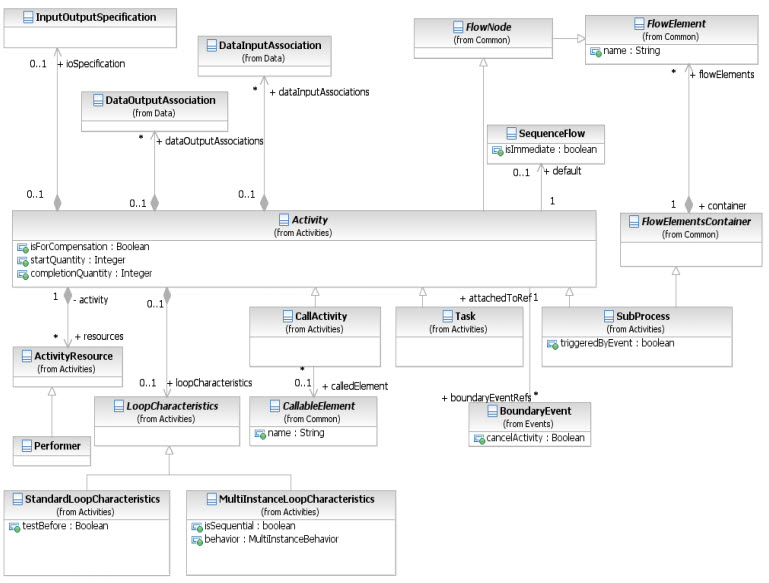 |
|||||||||||
|
|||||||||||
| BPM Project | ||
| BPMN2 Engine | ||
| BPEL Engine | ||
| BPMN2 Studio | ||
| BPEL Studio | ||
| Web-based Designer | ||
| WorkList | ||
| BAM Project | ||
| BPM Monitor | ||
| Services Manager | ||
| ESB Project | ||
| SCA ESB | ||
| JBI ESB | ||
| JEE6/7 Project | ||
| Mypard (RI) | ||
| Case Project | ||
| UML2.2 Studio | ||
| Data Designer | ||
| Web Designer | ||
| BI Project | ||
| OLAP Server | ||
| OLAP Client | ||
| ETL | ||
| Report | ||
| SDK | ||
| Meta | ||
| BPMN2 Engine
|
||
|---|---|---|
The BPMN2 Engine will have a clear focus on being light weight and easy to use for Java developers..
|
||
Features
First of all event listeners. That features allows to execute an out-of-the-box action, a piece of custom Java code or a script upon certain events in the diagram. This means that developers can decorate a process with extra technical details that don't show up in the diagram. This improves the collaboration between business people and technical people as the business people will not be confronted with technical aspects in the diagram. The Process Virtual Machine But there are many developer oriented process languages that are very easy to build on the Process Virtual Machine. There are numerous other languages that could be build on top of the Process Virtual Machine. We even envision companies building their own variants of domain specific process languages.
The core BPMN2 engine of course includes
Also support for domain-specific nodes and powerful rules integration. Human tasks Independent human task service for managing human tasks based on the WS-HumanTask specification. Eclipse-based tooling for creating BPMN2 processes Eclipse-based plugin that allows developers to graphically create BPMN2 processes, including basic validation, testing and debugging.
We'd like to continue the integration of the web-based BPMN2 editor based on the open-source Oryx editor. Process repository Knowledge repository for storing process definitions. Process management console Reporting Installation script (and demo setup) |
||
@ Copyright 2008-2010 VanXun

